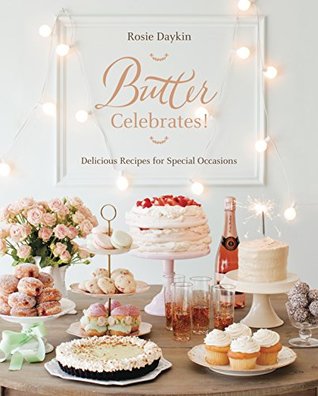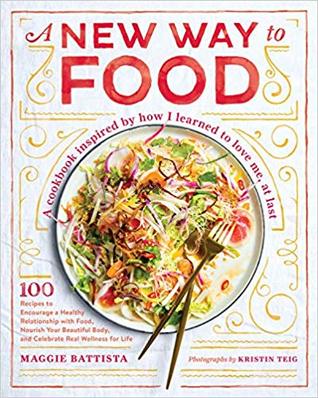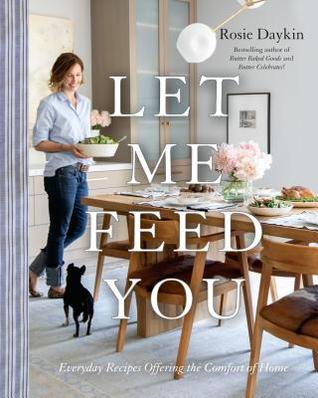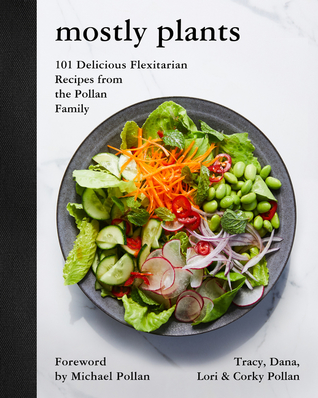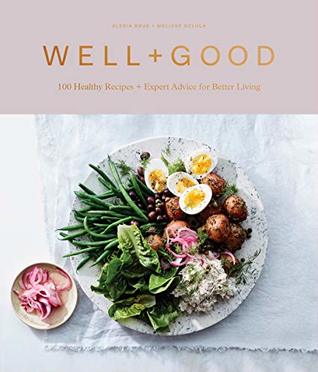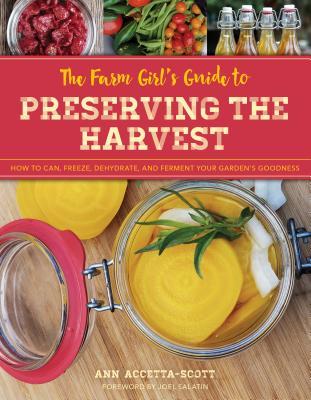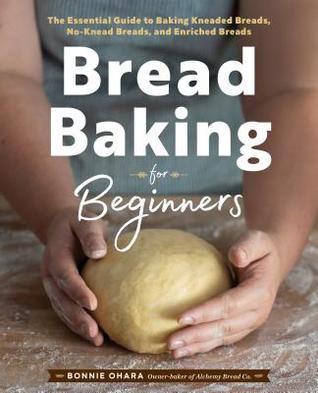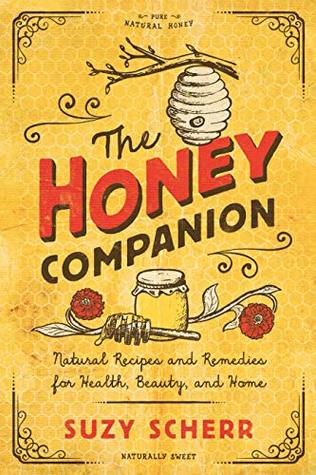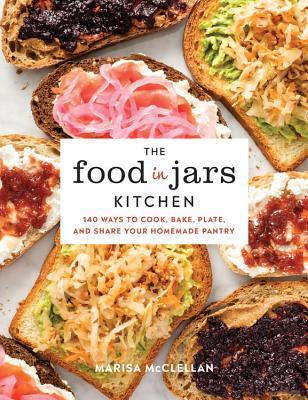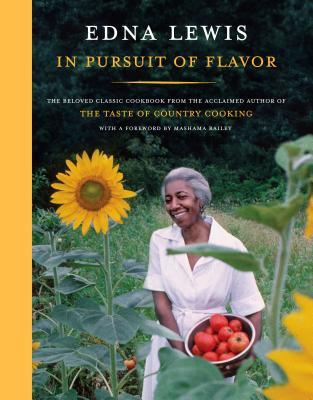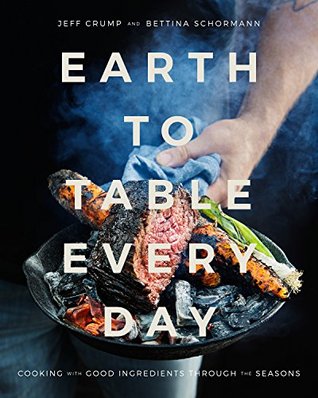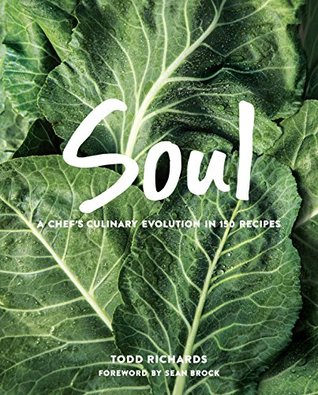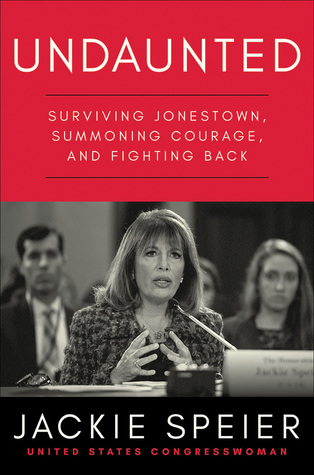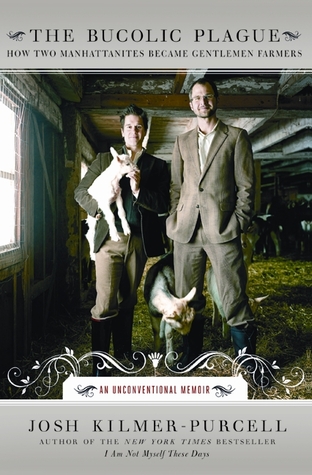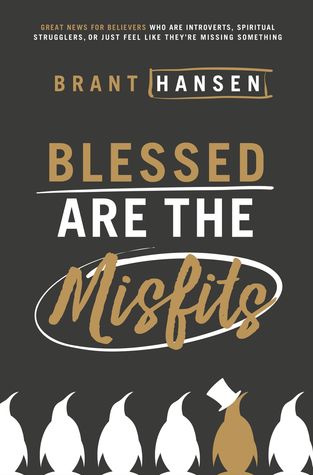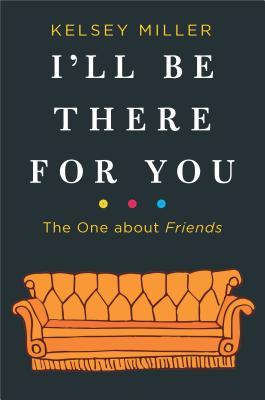Hippie Food: how back-to-the-landers, longhairs, and revolutionaries changed the way we eat by Jonathan Kauffman
In Hippie Food Jonathan Kauffman shows how the back-to-the-land and hippie food movements of the 1960's and 70's transformed America's food culture. When the hippie movement started food wasn't at the forefront, but it quickly became another area that could be revolutionized against the mainstream. Kauffman explores several themes and foods of the counter-cultural era and how now those foods and ideas are considered normal and mainstream - things like tofu and brown rice, organic farming, and co-ops. Each chapter gives insight into how a particular idea or food emerged, how it transformed over time, and how it still shows up today. This was a really interesting look at both the counter-culture food movement of the 1960's and 70's and also just how influential it was - despite the push-back from the media and mainstream at the time. Definitely an interesting book, but I would still argue that there is still a counter-cultural food movement going on today and unfortunately many of the issues the hippies were fighting against are still going on today (industrial agriculture, chemicals, destroying nature, profits over health, etc.)
Some quotes I liked:
"The food Americans were eating in the mid-1960's resembled nothing that any civilization on Earth had ever eaten before. The United States outright manufactured a meal like the Dining Deck Supper [from the 1963 Good Housekeeping Cookbook] - through innovations in farming, food processing, flavoring, packaging, and, yes, marketing, as well as a queer eagerness to abandon the culinary wisdom of the generations that preceded them." (p. 6)
"'Plastic' became the shorthand for commercial food, and the antithesis of what was natural. Plastic meant lab-manufactured, factory-made, chemically flavored and colored and preserved. Plastic food was wrapped in plastic bags and stacked on plastic shelves in great, impersonal, modern supermarkets. It looked created, not grown or made by human hands. It tasted like plastic - or rather, it tasted like nothing that came from fields, forests, and waters." (p. 118-19)
"They had no idea of what exactly they were going to do when they got back to the land, only that they needed to go...[Robert Houriet] wrote in the introduction to his 1971 book, Getting Back Together, 'Only afterward was it called a movement [the back-to-the-land movement]. At the outset it was the gut reaction of a generation.'" (p. 185)
"Nonvegetarian, noncounterculture eaters at the time may only have seen hippie food, vegetarian food, as brown or lacking. They were missing out on how it was transforming kitchens across the country. Cooking from the vegetarian cookbooks of the mid- to late 1970's would fill home cooks' cabinets with jars of new spices, make tahini and soy sauce refrigerator essentials, lead the American-born to tiny markets that catered to new immigrants, and stuff their canvas totes with produce their parents may never have cooked, or even seen." (p. 231)
"Just as the 1970s interest in whole foods sent longhairs into tiny health-food stores, the Paleo, vegan, and gluten-free movements of the early twenty-first century have sent people to food co-ops and natural-foods stores, where contemporary shoppers have taken bulk-bin staples and used them to their own ends." (p. 275)
"The growth of the organic marketplace is even more spectacular. Organic food is, arguably, the most visible legacy of the 1970s food movement." (p. 277)
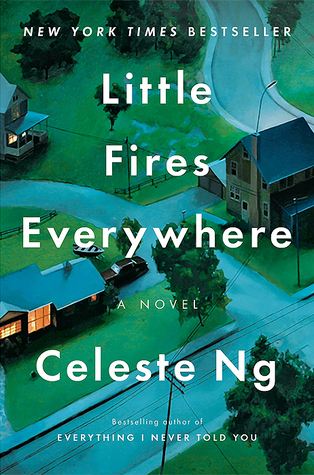
Little Fires Everywhere by Celeste Ng - Books & Banter book club
Shaker Heights, a suburb outside Cleveland, Ohio is a progressive town with every aspect planned out perfectly - from where trash cans are to be picked up (out of sight, not on the curb) to what color you're allowed to paint your house (color options depending on home style). The Richardson family is the fourth generation of their family to live there and like the neighborhood their life is expertly crafted. Then Mia and her teenage daughter Pearl move into their rental property and soon their perfectly planned life starts to unravel. When a long-time family friend of the Richardson's adoption of a Chinese baby turns into a lengthy court battle with the biological mother, even more cracks start to show up in the Richardson family. Celeste Ng does an incredible job of exploring many aspects of motherhood through several characters in the book. The way she weaves all the stories together is amazingly well-done. I liked Ng's previous book Everything I Never Told You, but I LOVED this one. It should make for a really great book club discussion.
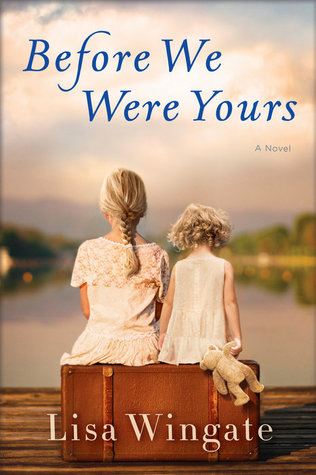
Before We Were Yours by Lisa Wingate - Evening Edition book club
It's 1939, Rill and her 4 siblings all live on a riverboat with her parents. One stormy night her mother goes into labor and is having trouble so her father takes her to the hospital. The next day the police come and bring all 5 children to the Tennessee Children's Home Society orphanage. There Rill and her siblings have their names changed, are beaten, barely fed, and threatened if they ask about home or their parents. One by one Rill's siblings disappear or are adopted under their assumed names. Finally she and her one remaining sister are adopted by the same couple, but Rill struggles to let go of her family of origin.
In the current day, Avery has come home to Aiken, SC from working as federal prosecutor in Washington, DC to help her father, a state Senator, through a health crisis. Raised with wealth and privilege, Avery has a chance encounter with a woman in a retirement home that causes her to question her family origins. She starts digging into the past and uncovers the horrific story of Georgia Tann and the Tennessee Children's Home Society orphanage where thousands of children from poor families were stolen and sold to wealthy or famous families all over the United States.
Lisa Wingate does an excellent job of tying Rill and Avery's storylines together. While neither character is based on an actual person, the Tennessee Children's Home Society orphanage and Georgia Tann are real and the story is based on sadly true events. The author gives several books about the actual events in the "note from the author" at the end of the book. I can see why there has been so much hype about this book and it should make for a good book club discussion.

The Stranger in the Woods: the extraordinary story of the last true hermit by Michael Finkel - re-read, Willow Grove book club (original review August 30, 2017)
This is one of those books that proves the axiom "truth is stranger than fiction." If this were a fictional story it would be completely unbelievable. For 27 years cabins around North Pond in Albion, Maine were routinely burglarized. Locals called the burglar the North Pond Hermit and he mostly stole food, batteries, books, and other small-scale supplies. No one thought it was the same person burglarizing for 27 years, but when Christopher Knight is caught in 2013 he confesses to upwards of 40 break-ins per year for the past 27 years. At 20 years old Knight just walked into the wilderness of Maine for no clear reason other than he wanted to be alone in the quiet of the woods. He survived by stealing everything he needed from food to clothes to shelter from seasonal cabins and a nearby camp. He only encountered humans on two occasions and never called his family or left the woods except for these break-ins. After he is arrested Michael Finkel manages to create a rapport with him and begins writing and visiting him which eventually leads to this book. Knight doesn't really even want to tell his story, if he could have his way he would go back into the woods again. He knew the stealing was wrong and never tries to justify it, but he truly enjoyed living a life of solitude in the Maine woods. Finkel does an excellent job of telling Knight's story from Knight's own perspective, as well as the perspectives of locals who were regularly burglarized. Finkel intersperses facts about solitude and hermits throughout Knight's story. Overall, a fascinating book that I just blew through in the course of a day at the beach.
Some quotes I really liked:
"According to more than a dozen studies conducted around the world, Knight's camp - an oasis of natural quiet - may have been the ideal setting to encourage maximum brain function. These studies, examining the difference between living in a calm place and existing amid commotion, all arrived at the same conclusion: noise and distraction are toxic...The body responds immediately, even during sleep. People who live in cities experience chronically elevated levels of stress hormone. These hormones, especially cortisol, increase one's blood pressure, contributing to heart disease and cellular damage. Noise harms your body and boils your brain." (p. 113)
"I began asking cabin owners - and, later, many others - to estimate the longest time they'd ever spend without human interaction. By this I meant not seeing anyone or communicating in any way, including phone, e-mail, or text messages. Just time by one's self, unconnected, though reading or listening to the radio or watching TV alone was okay. Nine out of ten people, often after a contemplative pause, realized that they had never passed a single day in solitude. Usually it was no more than a handful of waking hours. My father has lived seventy-three years but hasn't tried a dozen hours alone. I once embarked on a three-day solo wilderness trip but encountered a pair of hikers and stopped to chat, so my record is around forty-eight hours. A few accomplished explorers I know have gone a week. To meet someone who's finished a month would be extraordinary. Chris Knight, with his thousands upon thousands of days alone, was an unfathomable outlier." (p. 131-2)
"A large majority of men, and twenty-five percent of women, a University of Virginia study found, would rather subject themselves to mild electric shocks than do nothing but sit quietly with their thoughts for fifteen minutes. Unless you are a trained meditator, the study's authors concluded, the 'mind does not like to be alone with itself.'" (p. 136)
"He left because the world is not made to accommodate people like him. He was never happy in his youth - not in high school, not with a job, not being around other people. It made him feel constantly nervous. There was no place for him, and instead of suffering further, he escaped. It wasn't so much a protest as a quest; he was like a refugee from the human race. The forest offered him shelter." (p. 182)
Re-read in May 2019 for a book club I was covering for a co-worker. Just as good the second time around. Found a few more quotes I liked:
"Knight insisted that his escape should not be interpreted as a critique of modern life. 'I wasn't consciously judging society or myself. I just chose a different path.'...Carl Jung said that only an introvert could see 'the unfathomable stupidity of man.'...The Indian writer Jiddu Krishnamurti has been quoted as saying, 'It is no measure of health to be well adjusted to a profoundly sick society.'" (p. 122)
"After ten days in solitary confinement, many prisoners display clear signs of mental harm, and one study showed that about a third will eventually develop active psychosis. There are at least eighty thousand such inmates in America. The United Nations has determined that holding a person in isolation for more than fifteen days is cruel and inhuman punishment." (p. 136)
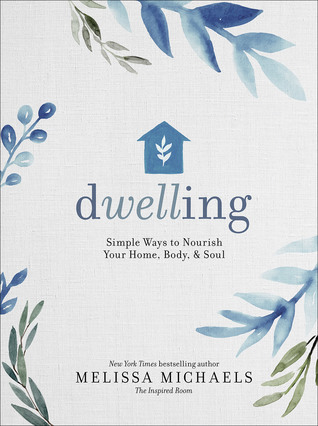
Dwelling: simple ways to nourish your home, body, and soul by Melissa Michaels
Melissa Michaels believes that our dwelling - both our home and our body are connected and taking care of one can inspire you to take care of the other and taking care of both are equally important. In Dwelling she goes through several ideas to create a more nourishing life for yourself. Some of the reviews I read complained that it was repetitive, but I think in each chapter she was trying to highlight ways to incorporate that chapter's idea into your home life and that could have overlap. I didn't find it repetitive, but I did find some of the chapters seemed to jump around or kind of seemed randomly put together. But, overall I think it was a good book about how to make your dwelling better and better reflect you and your values. I also liked that each chapter had several journaling prompts to help you work out ways to make changes and improve aspects of your life.
Some quotes I liked:
"When it comes to our home, it's important to make decisions that nurture us rather than stress us. Even if you have the means to make expensive or extravagant changes in your home or can afford to move to a more lavish neighborhood, you may decide to live more modestly. Someone else may choose to live in a more expensive neighborhood to avoid the traffic to and from work. Two hours gained for their family every day might be worth the additional expense for the peace added to their home." (p. 50)
"But by incorporating this technology into our lives, are we missing out on fully living in the moments? Are we living our best life? Or are we spending our lives trying to look like we do? Does a camera or the use of social media inspire us to create more vivid memories and even better savor each moment? If we don't know what to do without our cell phone in hand, or we've lost touch with what fuels our soul and fills our self-worth, we've lost something that should be precious to us." (p. 94)
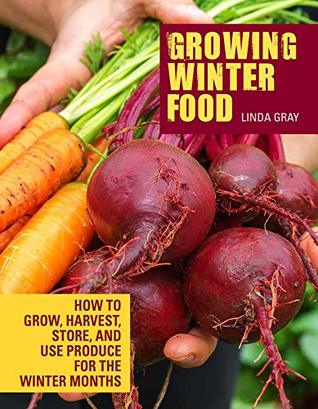
Growing Winter Food by Linda Gray
Every year I say that I'm going to try a fall/winter garden or grow more root vegetables to use over the winter months and every year I run out of time. This book is a great overview of growing, harvesting, and storing winter vegetables. The first section goes over some gardening tips and gives a few charts on what vegetables are good for what seasons. Then the rest of the book is different foods and with each one the author talks about how to plant (whether direct seed or seedlings), how to care for the plants, harvesting, storing, nutrient info, and a few recipe ideas. It's really a small book that is full of very helpful information. This is one I might need to buy to keep on hand for the future whenever I finally get around to doing more in my garden.
Buttermilk Graffiti by Edward Lee
Edward Lee spent two years traveling the US exploring immigrant food. Immigrants are what makes up America, so how do immigrants incorporate their food into their new culture and how does American food change with the influence of all this immigrant food? These are some of the questions Lee explores in this book. Each chapter focuses on a specific ethnic food in a small town in America. Often it's surprising as Lee claims the best Jewish Deli is in Indianapolis, or there is a huge Middle Eastern population and food culture in Dearborn, Michigan. Lee says, "The plate of food has never been the be-all and end-all for me. Quite the opposite: for me, good food is just the beginning of a trail that leads back to a person whose story is usually worth telling." (p. 32) and that is exactly what he does in this book he highlights not just ethnic food all over the US, but the specific people who are cooking this food and their stories. Definitely an interesting look at just how diverse the food culture is here in the US.
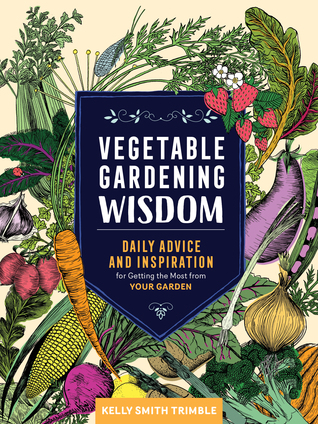
Vegetable Gardening Wisdom by Kelly Smith Trimble
This small book is packed full of helpful gardening tips, tricks, and ideas with a few recipes thrown in as well. It's divided by season - late winter, spring, summer, and fall and each section's tips are relevant to that season. There were a lot of good tips and inspiration, but I also liked that it's a book you could easily pick up and read a few pages and pick up again later. I read through each section at a time, but you could easily read it any number of ways. This is one that would be good to have on hand and flip through once a year or so just to refresh. Good for the beginning gardener or someone more seasoned. A great book overall.
Fed Up: emotional labor, women, and the way forward by Gemma Hartley
"Day in and day out, women anticipate and manage the needs of others." this first line of the book description is the basic definition of emotional labor. All the mental work that goes into running a household or workplace - who's birthday is coming up, buying gifts, making sure bills are paid, making doctor or house maintenance appointments, etc. the list is never ending. As a women's studies minor in college I was well-versed in Betty Friedan's "the problem with no name" and the "second shift." But, it wasn't until this book that I really understood that a frustration I've felt and apparently that every single woman has felt is the weight of emotional labor. Hartley states that she has a wonderful, involved husband who does a lot, but a lot in comparison to other men or a lot compared to her? That's the real question. I also have a wonderful husband who does a lot and while we don't have children I have definitely been frustrated to feel like I do most, if not all, the emotional labor. Hartley does a great job is fleshing out how emotional labor plays out in our homes and workplaces. Most of her examples involve parents and I'm sure the emotional labor goes WAY up when kids are added to the mix. She also gives some solid ways to make changes in your own home which is good - the book is not just bitching about how men don't do enough, she actually shows how she addressed this with her husband and how over time they were able to make some pretty significant changes - and how they BOTH changed, not just him. Hartley points out that much of the issues women have with emotional labor is due to how our society views gender, work, value and gender roles. So, in order for this issue to ever get better we need to address it with our significant others and do the hard work of trying to change ourselves and our relationships for the better. Definitely a must read for everyone.
Lots of quotes I liked:
"Even when there is a fifty-fifty split in domestic labor and childcare, we aren't quantifying the emotional labor that goes into these tasks. Often it's easy to miss the 'more' that we do, because much of the 'more' is invisible. At the heart of so much emotional labor is the mental load that goes into ensuring everything gets done. For every task that produces a physically visible result, there are many mental steps behind it that remain unseen. Those steps are largely noticed, tracked, and executed by women." (p. 5)
"We need to know it's okay to want more from our partners, even when society tells us not to, because that is how progress is made." (p. 84)
"The fact that people need to like you for you to get promotions is true of both genders, but an aggressive and less emotionally involved man is rarely blacklisted as 'overbearing' or a 'control freak.' He is seen as a strong leader and detail oriented...Maintaining high expectations for emotional labor in the workplace puts women in a position where they cannot possibly win, at least not in the same well-liked capacity as men who exhibit similar qualities." (p. 145-6)
[Hillary Clinton when running for President in 2016] "She was, in short, too close to the masculine standard for comfort, but still too feminine to be the leader of the United States. In such a no-win position, it speaks deeply to her political aptitude that she went as far as she did." (p. 149)
"In the large majority of rapes - those perpetrated by someone the victim already knows - we ask if she was leading him on (indeed, if her emotional labor went too far into intimate territory). We ask what she did to stop it from happening (could she have walked the fine line more carefully?). We ask what she was wearing (was she playing the appropriate role in her appearance?). We scrutinize the emotional labor performed by the victim, because it is more socially acceptable to criticize the behavior or victimized women than it is to criticize men who are criminals. It is this aspect of rape culture that makes victims so hesitant to speak out about their experience in the first place." (p. 165)
"The root of the problem was that I was asking for the wrong thing. The truth is that I don't need 'help' - I need full partnership. There is a difference between the two. Helping means 'this is not my job.' Helping means 'I am doing you a favor.' Helping means 'this is your responsibility.' Helping implies that the helper is going above and beyond, while the responsible party is falling behind. Why is only one of us responsible for our shared life? Full partnership, on the other hand, means not having to delegate and micro-manage. It also means significantly shifting our perspective on who is expected to do what - who is expected to be in charge...'Help' is a bandage on a broken bone. We need a total reset. And that doesn't just mean changing our partners' perspectives; it means changing our own too." (p. 209-10)
"I'm motivated by the cultural idea that women are meant to be perfect and that anything less than perfect makes me less than worthy. So I keep reaching and reaching for perfect, and I get better and better at emotional labor...Rob was able to figure out a way to keep everyone happy and comfortable, without any guidance from me, when I gave him the space to do so. He did so without striving for perfection, without second-guessing himself, without wondering if his way was the best way. His standards are not my standards, because he has not been taught to expect domestic perfection for himself. He approached emotional labor without any baggage: good enough was good enough." (p. 220-1)
"'The more conservative homeschooling mothers would be willing to accept that this is my role as mom. This is my duty. This is what God wants me to do,' Lois tells me. 'The Christian faith helped them manage their feelings of stress.' There was a feeling of purpose behind their emotional labor, and that, coupled with the unquestioned expectation that they would not receive help from their partners, allowed them to 'manipulate their feelings' so that emotional labor did not weigh on them so heavily." (p. 232) [this subject should be the topic of a whole other book...]
"Setting boundaries isn't about others at all. It's about you. It's about making sure that your time, mental space, and emotional energy are being spent in ways that align with your values and priorities. Emotional labor always serves a purpose, but it doesn't always serve you...We need to stop modeling martyrdom and start modeling boundaries - no longer allowing emotional labor to overwhelm us but rather harnessing those skills to make our lives more fulfilling." (p. 238)

